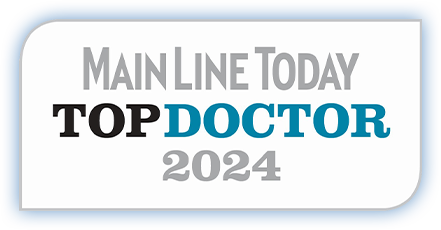Eyelid and facial surgery is virtually painless during the surgery itself. In the beginning of the operation there are some pinches which can be briefly painful while local anesthetic numbing medicine is used. Dr. Chandler is as gentle as possible, using the most delicate equipment. Dr. Chandler may prescribe a mild sedative to keep you relaxed and at ease. Having performed thousands of eyelid procedures, Dr. Chandler does everything he can to keep you comfortable. Afterwards, you may experience some tenderness and swelling, but significant pain is rare. Most patients report very minimal pain at all, and that they are back on their feet and feeling great in just a few days.
Downtime after Eyelid Plastic Surgery is minimal. Dr. Chandler asks that for the first 24 hours after surgery you apply cool ice compresses to the areas of the face where you had surgery. Ice compresses are applied for 20-30 minutes, with 20-30 minute breaks in between. For the first week after surgery patients are asked not to work-out, to avoid activities like yoga, and to avoid anything very strenuous. Everyday activities are fine, but do not lift extremely heavy weight, avoid constantly bending over, and stay out of working in dirty environments.
Recovery from Eyelid Surgery is generally mild but you should give yourself about a week before expecting to return to full activities and work. Most of Dr. Chandler’s patients are back on their feet in just a few days. There can be some mild blurriness of vision due to swelling and using ointment for healing so expect not to be able to do long periods of reading fine documents or studying the computer screen for at least a few days after surgery.
Eyelid Surgery is intended to revive the face, restore youthfulness to the eyes, and refresh your appearance. Unfortunately, as time passes, the changes from aging continue to affect the face. Everyone ages differently and it is impossible to make a hard and fast rule, but in general eyelid surgery may last about 8-10 years.
In some instances with very elderly patients who suffer from visual loss due to extreme sagging of the eyelids, insurance may cover some surgical costs. However, there are very strict guidelines set by insurance carriers and Medicare that few patients meet. This issue has been examined very closely by insurance providers and Medicare over the last several years, and they have determined again and again that the vast majority of eyelid surgical procedures are considered cosmetic in nature. Guidelines from years ago no longer apply today.
Many patients routinely come to Dr. Chandler for moles, cysts, skin tags, and growths around the eyes, in delicate locations, and in exposed areas of the face. Most people do not like the appearance of these growths. The majority of face moles and skin tags are considered cosmetic by insurance companies and Medicare and they do not cover to have them removed. If any growths are cancerous or are causing harm by being in a critical location (for example, touching against the eyeball or blocking the opening of the nose), then insurance might deem the procedure to be a functional medical problem and may cover the procedure.
One goal of plastic surgery is to perform procedures with the least visible scarring. Incisions during eyelid plastic surgery such as Blepharoplasty or Ptosis surgery are placed in the creases of the eyelids and in locations to avoid visible scarring as much as possible. Some scarring does occur, but Dr. Chandler strives to have very minimal visible incision lines. Patients are encouraged to wait patiently during the healing process as most incisions fade away with time and are minimized over the 6 to 12 months it takes to heal completely from eyelid plastic surgery.
The area around the eye is extremely sensitive and patients are understandably very concerned about the safety and health of their eyes. Dr. Chandler has more than 10 years experience removing thousands of moles and skin tags around the eyes. When dermatologists, plastic surgeons, family practitioners, and eye doctors cannot help because of this delicate location, patients come to Dr. Chandler for treatment. Most growths and moles can be removed with minimal or no scarring. For growths, cysts, skin tags near the edge of the eyelid or in the lashes, there is always a risk for the loss of eyelashes or notching of the edge of the eyelid. Despite this, Dr. Chandler has seen this very rarely in his patients and usually only when the growth is extremely disfiguring beforehand.
Most face moles can be removed safely and in the office with local anesthesia medicine. Dr. Chandler has extensive experience removing thousands of such moles. Dr. Chandler routinely removes moles, skin tags, cysts, lesions, cholesterol deposits, xanthelasmas, lipomas, sebaceous cysts, and milia. Some bleeding can occur after, but this is typically very minimal. Extremely large moles or those in very challenging locations (for example, a cyst disfiguring the lip) may requires more extensive surgery and Dr. Chandler could discuss your options in such a circumstance.
Bruising around and under the eyes is common after Eyelid Plastic Surgery. Dr. Chandler employs the most delicate and precise techniques to minimize bleeding and bruising after surgery. It is very rare for Dr. Chandler’s patients to have large black eyes after surgery unless they are using significant blood thinners. Dr. Chandler has a three step-approach to assist patients with bruising. First, patients are instructed to avoid or minimize blood thinners unless an underlying medical condition prevents this. Second, Dr. Chandler recommends the use of homeopathic Arnica Montana to minimize bruising. Thirdly, Dr. Chandler advises his patients in the proper use of post operative cover-up makeup to camouflage bruising. Bruising always resolves but can take 1 to 2 weeks to fade completely.
Board-certified, fellowship-trained Oculofacial Plastic Surgeon, Dr. Damon Chandler, performs all facial filler and Botox injections for his patients. He does not use or recommend any patients to be treated by nurses, non-doctors, or doctors who are not experts in facial plastic surgery.
Lower eyelid blepharoplasty surgery is the usual treatment for eyelid bags. Eyelid bags are usually causes by excess bulging eyelid fat, sagging skin, or a loss of the strength of the lower eyelids. Topical creams or make-up may help to gently soften fine lines of the skin around the eyes, but cannot treat eyelid bags sufficiently. Lower eyelid cosmetic surgery seeks to remove and sculpt excess fat, remove excess skin if necessary, and tighten and support the lower eyelid or even the cheeks. Dr. Chandler is happy to discuss all of the complexities of lower eyelid blepharoplasty during an in-person consultation.
Only an in-person consultation can answer if you are a good candidate for Eyelid Plastic Surgery. Dr. Chandler will discuss his findings with you and he always seeks a meeting of the minds between what he sees and what his patient’s goals are for cosmetic surgery. Most patients of any age can be candidates for cosmetic surgery. Rarely, severe debilitating medical conditions may cause Dr. Chandler to advise against cosmetic surgery.
Dr. Chandler performs a majority of his surgery under local anesthesia in his office surgical suite. Many patients can be treated with local anesthesia along with oral sedation. More extensive Eyelid and Facial Plastic Surgery is performed in an outpatient surgery center under sedation or general anesthesia with an anesthesiologist. Dr. Chandler uses the Abington Surgical Center (** use internet link **) located just off the Pennsylvania Turnpike for his patients. Abington Surgical Center is a state-of-the-art, modern facility directed by board-certified Anesthesiologists.
Almost all facial or eyelid moles, cysts, skin tags and growths are removed under local anesthesia in Dr. Chandler’s office surgical suite. Oral sedation can be used if patients are very anxious prior to their procedures.
Eyelid asymmetry can be due to many causes such as uneven eyebrow position, facial bone structure asymmetry, excess skin of the eyelids, or weakness of the eyelid muscles. Each patient is unique and Dr. Chandler will analyze your facial asymmetry and consider what options would benefit you. Eyelid asymmetry requires analysis by an eyelid surgery expert, not by someone without specific training in eyelid and facial anatomy. Dr. Chandler has spent his entire career studying facial features and eyelid symmetry. Dr. Chandler has found that most patients can have a remarkable improvement in eyelid or facial asymmetry through surgery or non-surgical rejuvenation.
Ptosis (pronounced “toe-sis”) is a drooping of one or both upper eyelids due to a weakness of the muscle that holds the eyelid in proper position. Ptosis can make a person appear very tired, seem less intelligent, or even appear to be under the influence of drugs or alcohol. Patients with ptosis lack a “bright-eyed” appearance and can convey a worn-out appearance. Surgical correction of Ptosis can have a remarkable impact on the appearance of a person’s face. Ptosis surgery is very different than blepharoplasty.
Blepharoplasty is a surgical procedure performed on the eyelids to help sculpt, shape, and restore youthfulness. Blepharoplasty may be performed on the upper eyelids, lower eyelids, or both upper and lower eyelids at the same time. Incisions are placed to minimize the effects of scarring but to maximize the results. Blepharoplasty is a same-day procedure that may be performed in Dr. Chandler’s in-office surgical suite or in an outpatient surgical center.
The skin is a complex structure and it contains many elements. Aging, sun exposure throughout our life, and genetic factors contribute to growths that form on the face. Some patients blame injuries in their youth, substances that they applied to their face, too much rubbing of certain areas, and exposures to chemicals or other substances for the development of facial moles or growths. But the aging process, sun damage, and genetics are usually the underlying factors.
Eyelid Plastic Surgery has the potential risks of causing harm to the eyes themselves. Oculofacial Plastic Surgeons like Dr. Chandler spend their entire careers striving to protect and keep the eyes healthy. Dr. Chandler focuses his practice entirely on eyelid and facial surgery and he performs eyelid surgeries almost daily. Fortunately, catastrophic injuries are extremely rare during eyelid surgery. The primary risks of eyelid surgery are bruising and swelling of the eyelids (which resolves with time), dryness of the eye surface, abnormal positions of the eyelids, and asymmetry. Dr. Chandler reviews the risks of eyelid surgery based on your individual history and clinical examination. Dr. Chandler is an expert in eyelid plastic surgery and has performed thousands of eyelid operations in his career, and he devotes his life’s work to protecting the eyes he sees every day in his practice.
Dr. Chandler and his team have a pre-operative regimen so that you will be properly prepared for any surgeries he performs. Avoiding blood thinners (in conjunction with your primary doctor or cardiologist), using homeopathic Arnica to reduce bruising, and having cover-up makeup ready in advance are helpful in keeping the effects of bruising after surgery to a minimum. Dr. Chandler asks that you wear no makeup or use any facial lotions the day of surgery and asks that you wear no jewelry. Dr. Chandler’s surgical coordinators can review the entire process with you so that you will be ready and at ease the day of your procedure.



